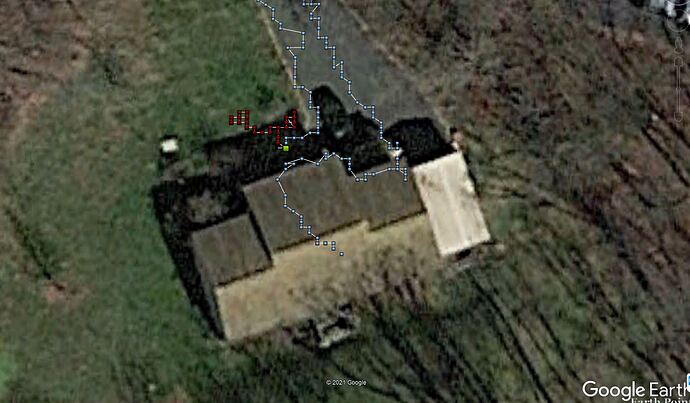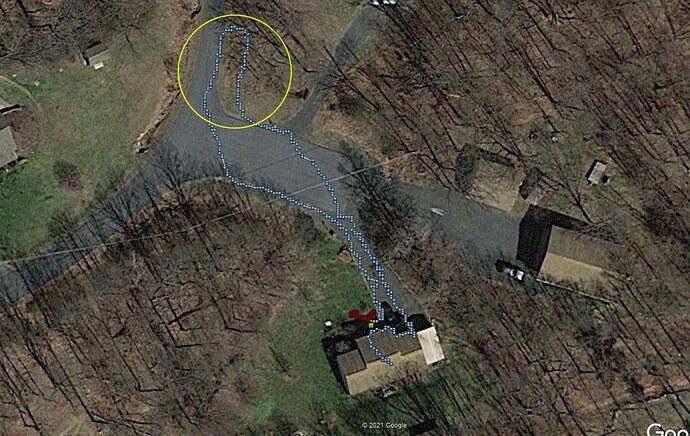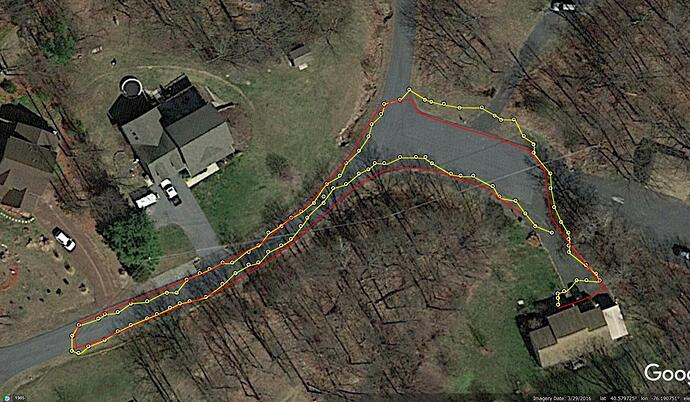You are actually confirming what others have also noticed with a GPS.
My Garmin GPS can’t reliably travel between the beginning and end of my driveway either.
There are “precision” GPS devices but I suspect that they cost like fully tricked-out Bugatti.
I suspect that their “motion” algorithm is more complex than simple “here” and “there” coordinate pairs.
I suspect that they use direction-of-travel, velocity-of-travel, and accurate time to fine-tune the GPS position. Note that, depending on the resolution of the TOD returned by the GPS receiver, you might well have the equivalent of a Cesium Stratum-0, Atomic time-source with you.  GPS time has to be insanely accurate to even give you an approximate location.
GPS time has to be insanely accurate to even give you an approximate location.
Viz.:
I am moving in direction “X”, at velocity “V”, for a period of time “T”. Therefore if I assume I started here (coordinates at lat, lon), and I traveled in “X” direction for “T” time at “V” velocity, I should now be here (lat’, lon’).
You have done more research with the GPS in the last week or so than I have done in my entire life! (laughing).
One thought.
Have you tried to select a target location further away - like fractions of a mile - and take the GPS on a bicycle or in a car?
Another thought:
I notice that my Garmin, when moved to a entirely new location requiring a new satellite map, (i.e. From the US to Europe, or a large distance across the US), the original fixes tend to wander and even after attaining “high” precision, it often thinks I am doing one thing when I am doing something else. It’s only after being alive, attaining a high-precision fix, and maintaining that fix for a long period of time, (> 30 min to possibly hours), that the perceived accuracy settles down and does what it is supposed to.
Possibly the “I’m here” algorithms need a certain amount of accumulated data to average out all the potential errors? I don’t know.
Also remember that automotive GPS’s assume you are on a road and “snap” to the nearest one.
I also suspect that the need for higher accuracy, faster acquire times, and better precision is part of the reason that aviation and instrumentation class GPS devices are hideously expensive compared to “automotive” class devices.


 GPS time has to be insanely accurate to even give you an approximate location.
GPS time has to be insanely accurate to even give you an approximate location.


